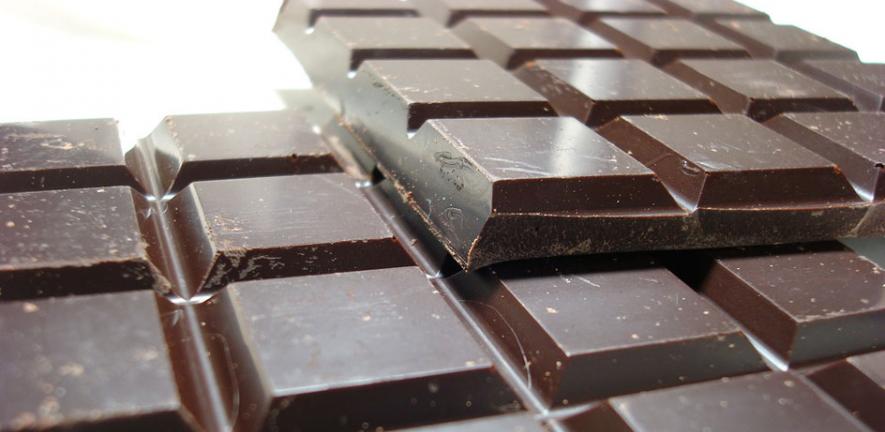
Chocolate manufacture is an age-old process that can be traced back to the Maya Indians. Over a thousand years later, MRI is being used to help perfect the technique.
Chocolate manufacture is an age-old process that can be traced back to the Maya Indians. Over a thousand years later, MRI is being used to help perfect the technique.
Most of us are familiar with the use of magnetic resonance imaging (MRI) to scan the human body for signs of disease. Magnetic fields up to 30,000 times stronger than the Earth’s magnetic field plus radiowaves are passed through the body, exciting the hydrogen atoms within. Because different tissues contain different amounts of hydrogen atoms in different environments, a scanner can turn these detected signals into an image of the body.
Like the human body, chocolate is largely composed of fat and water, which contain the hydrogen atoms needed to perform MRI. In recent years, researchers have begun to use MRI to provide precise information about the processing, properties and quality of food products like chocolate.
Food engineering involves the processing of basic food materials such that the resulting physical and chemical transformations can deliver the desired properties to the final food product. For chocolate, this means colour and flavour, a silky, smooth finish, good sheen, a crisp break and no crumbling.
At the Magnetic Resonance Research Centre (MRRC), a range of industrial food-processing routes are imaged in situ in a non-invasive manner using MRI. These are generally dynamic systems, requiring the application of ultra-rapid MRI techniques, the development and application of which is a unique strength of the MRRC. Insights delivered by the time-resolved images are used both to inform process improvements and to validate rigorous process simulation.
In particular, the MRRC explores the intermediate creation of chocolate ‘crumb’ from various fats, sugars, water and milk products. In industrial chocolate manufacture, this chocolate crumb is further refined by ‘conching’ and ‘tempering’ – intensive processes that ultimately define the taste, texture and smell of chocolate. The goal is to reduce the particle size of the cocoa solids and sugar crystals to less than the size that can be detected by the human tongue.
For crumb manufacture, the chocolate ingredients are mixed to form a wet paste, then dried as slabs in large vacuum ovens to form the crumb. At the MRRC, MRI is used to quantify the water distribution during the paste–crumb transformation in a vacuum oven as a function of time. MRI slices are extracted from a three-dimensional (3D) image showing the residual water distribution. This non-invasive technique enables the drying regime to be identified (heat-transfer controlled), and also serves to verify simulation models of the crumb-forming process; these can now be used with increased confidence and have led to significant energy-saving process modifications.
A particular strength of MRI with respect to food-processing studies is its ability to map out the full 3D velocity field in the equipment in situ. This means that the mixing and shearing of the food can be directly quantified, as well as any resulting physical and/or chemical changes.
One of the most enjoyable aspects of eating chocolate – the ‘melt in the mouth’ experience – is based on the fact that the melting point of chocolate is slightly below our own body temperature. MRI-based information generated by the MRRC can ultimately lead to energy-saving improvements in the manufacture and quality of chocolate; all helping to improve the delivery and quality of this experience.
For more information on applications of MRI to food-processing studies, please contact the author Dr Mike Johns (mlj21@cam.a.uk) at the Magnetic Resonance Research Centre, Department of Chemical Engineering.
This work is licensed under a Creative Commons Licence. If you use this content on your site please link back to this page.

